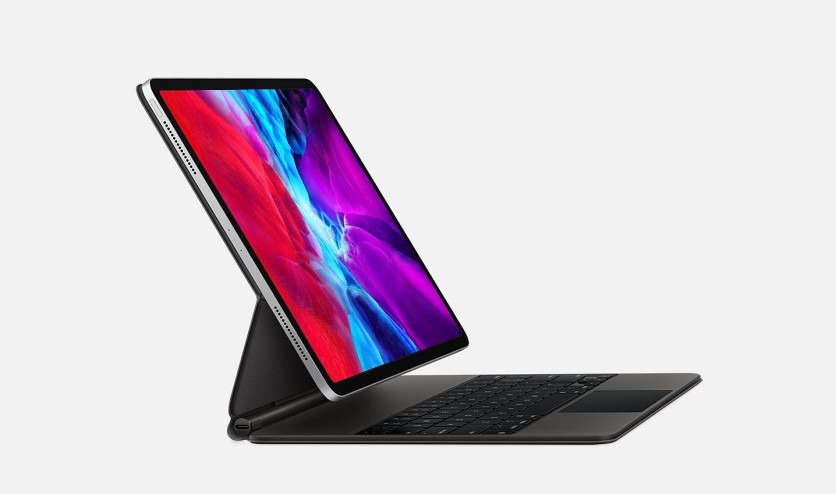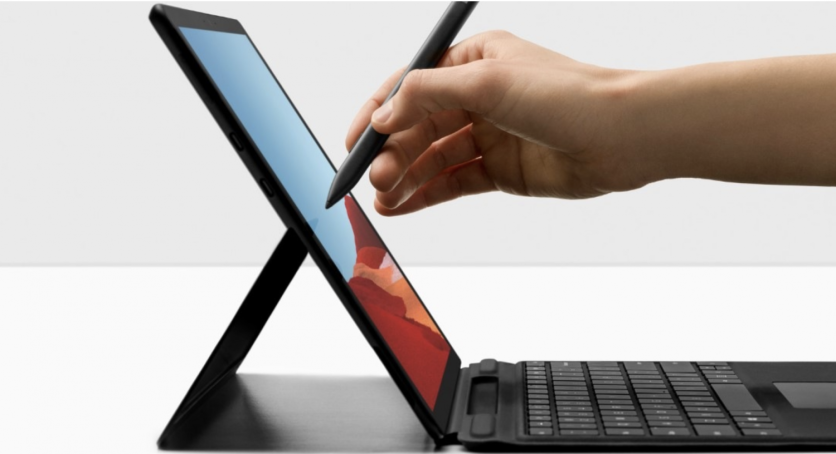
Apple has spent the past 10 years dismissing the idea of iPad having a keyboard, a trackpad, or even a stylus while mocking Microsoft for taking that exact approach with the Surface. As its new tablet release, did the tech giant finally admit that Microsoft was right approximately tablets?
Every iPad has transformed into a Surface in current years. As of this week, the iPad Pro and Surface Pro look even more alike. Both have detachable keyboards, adjustable stands, trackpads, and styluses.
ALSO READ : The Advent of Apple's New MacBook Air and iPad Pro Arrived! Will Its Keyboards Do Its Job?
Apple of the eye... not?

As Apple CEO Tim Cook stood on stage to introduce the new Macs and iPads six years ago, he said the tech giant's competition is different. "They [Microsoft] chased after netbooks, now they're trying to make PCs into tablets and tablets into PCs," Cook added, wondering what its competitor would do next.
Apple's first iPad Pro debuted in 2015 with support for the Apple Pencil stylus and a smart keyboard. It arrived simply as iPad sales had declined to the factor where Apple become making more money on Macs instead. The iPad Pro keyboard magnetically connected to the iPad Pro, similar to the Surface Pro; however, Apple claimed it was "not like any keyboard you've ever used before."
As every big iPad now supports a keyboard and stylus, Apple persisted with its touch-first vision for the iPad. However, Steve Jobs knocked on the idea before that -- saying that iPad was an "ergonomic disaster."
Has Surface Pro proved its point now, yes?

Microsoft has learned the hard way in making tablets. Bill Gates tried to persuade the world that tablets would be a thing in 2002, but the hardware and software program was far too primitive before. The software program maker finally added the Surface RT along Windows 8 in 2012 as an apparent response to the iPad. But the tablet had an ARM-powered computing device operating system that didn't support your favorite apps.
In a detailed blog post about Windows 8, former Windows chief Steven Sinofsky said: "something is different about tablets." He claimed that people still do desire a physical keyboard.
Sinofsky explained that people yearn for something better than on-screen typing when they need to write more than a few quick lines of text even in the absence of Microsoft Office. He presumed that an OS and its apps should not be compromised since people do benefit from an accurate, reliable, and fast user input enabled by a physical keyboard.
The message was evident here. Touch-primarily based computing would be first-rate access for Windows 8 but no longer the best way to use the operating device. Microsoft insisted users wanted a mouse for precision, a keyboard for typing, and a stylus for taking notes or drawing. These fundamental foundations brought about the Surface Pro, with its sort of inputs to shape extraordinary needs.
Microsoft also mastered the capacity to apply a tablet at a desk or on a couch, way to its Surface kickstand, and hinge designs. It was a key differentiator against gadgets just like the iPad, and Microsoft and Intel now license out the layout for other PC makers to use. It didn't take long for everyone to begin copying Microsoft's Surface layout.
The Verdict
What's now at play is a conflict of ecosystems, apps, and working systems. Since Apple and Microsoft have aligned on tablets' capacity in terms of hardware, the struggle between PC and iPad will shift closer to software performance.
If Surface was capable of proving its point, then Microsoft may have one-upped Apple. Could that be a terrific thing? Somebody out there in PC land must be able to show that Apple is wrong as soon as in a while.
ⓒ 2025 TECHTIMES.com All rights reserved. Do not reproduce without permission.




